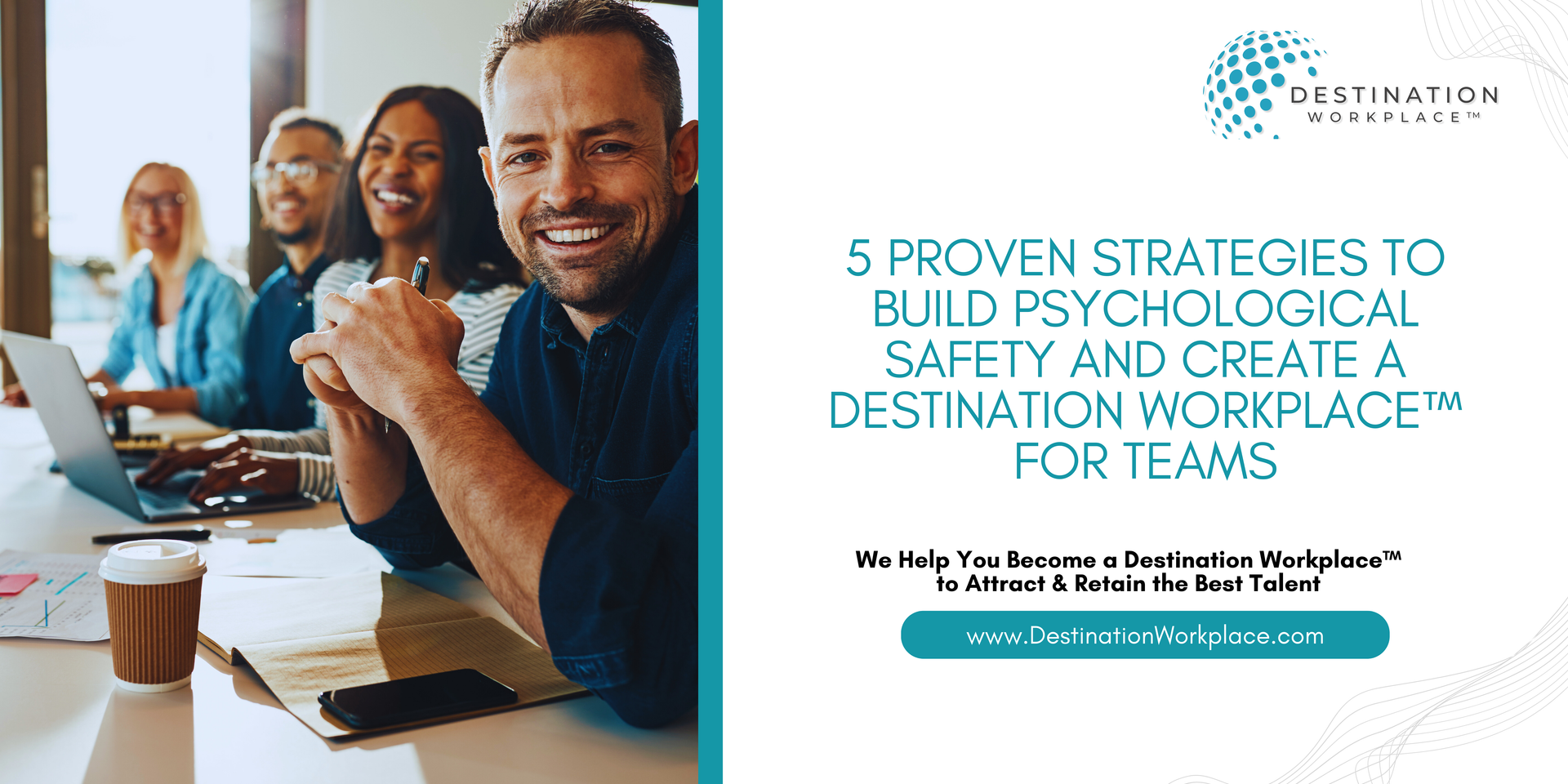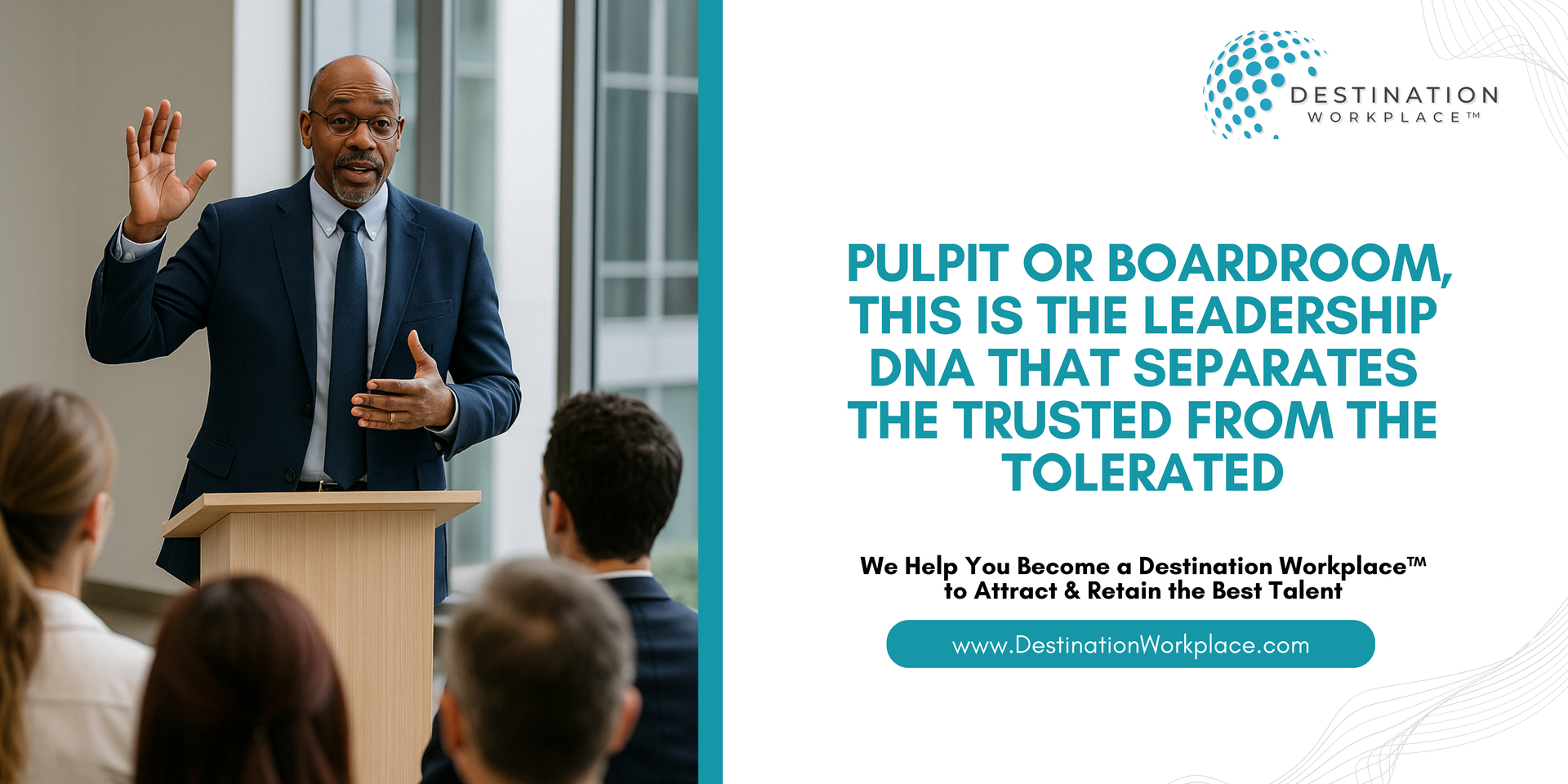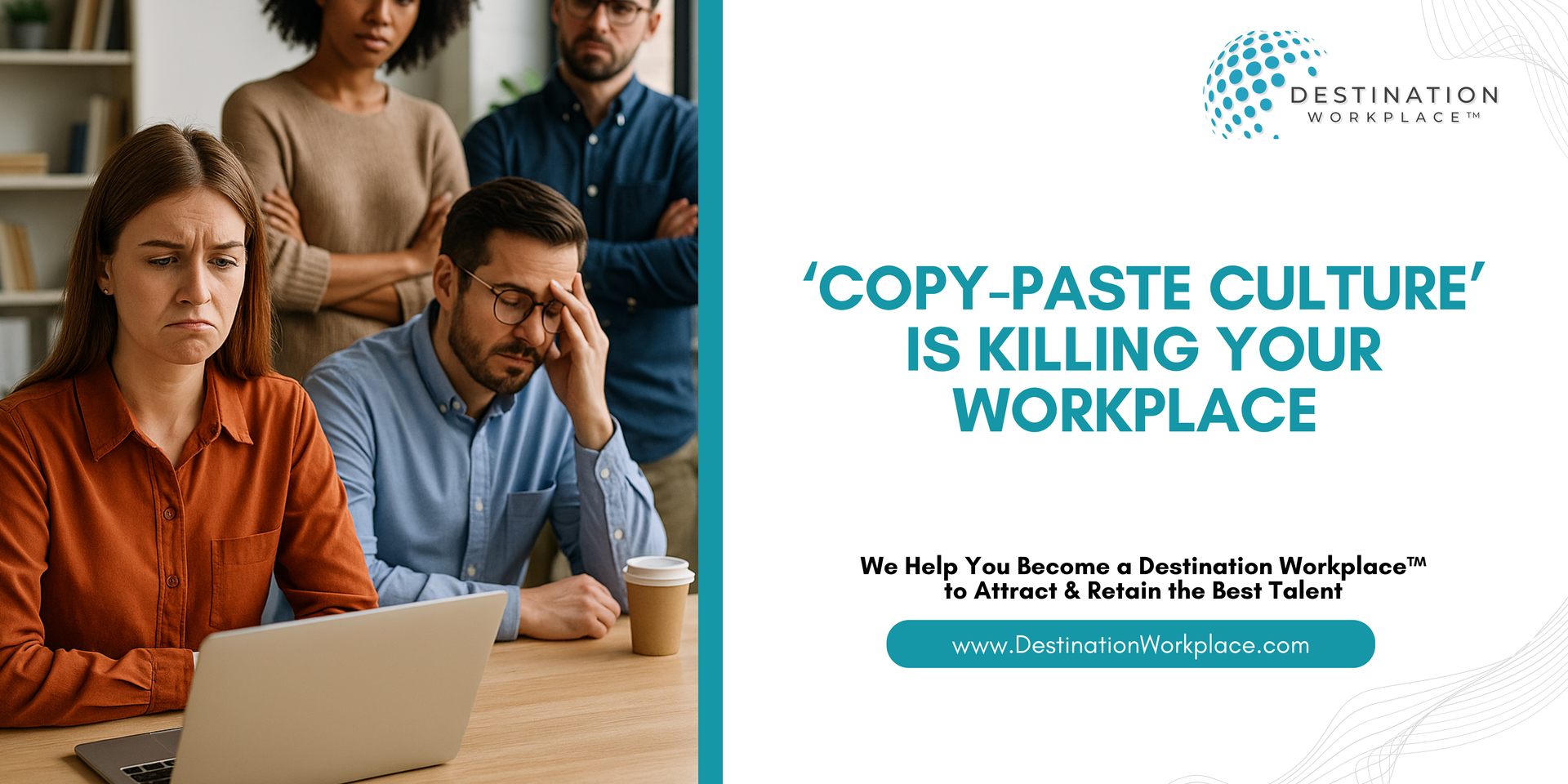5 Proven Strategies to Build Psychological Safety and Create a Destination Workplace™ for Teams

Creating an environment where employees feel safe to express themselves is critical for productivity, innovation, and retention. Teams that experience psychological safety perform better because employees feel free to take risks, share ideas, and voice concerns without fear of judgment or retaliation. In fact, Google’s “Project Aristotle” found that psychological safety was the number one factor influencing a team’s success. But how can leaders actively foster this sense of security?
This article dives into five actionable strategies to build psychological safety in your team, backed by examples, statistics, and tips for success. By prioritizing this element of workplace culture, you’ll position your company as a destination workplace—where talent thrives and your business excels.
1. Encourage Open Dialogue: Invite Input from Everyone
Psychological safety hinges on creating a space where everyone feels heard. This means encouraging all voices to be part of the conversation, not just the loudest or most senior. When team members believe their input is valued, they are more likely to contribute their best ideas and voice concerns early, preventing larger issues down the line.
Example:
At Pixar, the "Braintrust" sessions are a hallmark of their creative process. During these sessions, everyone—from junior team members to directors—can offer candid feedback. The key is that their input is not judged, but discussed, enabling a free flow of ideas that have fueled many of Pixar's iconic films.
Bullet Tips for Success:
- Ensure everyone has a chance to speak in meetings by rotating who leads discussions.
- Use anonymous feedback tools if people seem hesitant to share openly, such as Survey Monkey or Poll Everywhere.
- Celebrate diverse perspectives and contributions.
Key Statistic:
Gallup research found that employees who feel their opinions are heard are 4.6 times more likely to feel empowered to perform their best work.
2. Normalize Asking for Help: Erase the Stigma of Uncertainty
Psychological safety thrives when asking for help isn’t seen as a weakness. Teams must feel comfortable reaching out for support without fear of judgment. Leaders can model this behavior by actively asking for input, being open to questions, and encouraging curiosity.
Example:
At IDEO, a global design company, employees are encouraged to “ask the dumb questions.” This philosophy allows individuals to gain clarity on complex projects and fosters a culture of collective problem-solving. By making it normal to ask for help, IDEO taps into the collective intelligence of its teams.
Bullet Tips for Success:
- Encourage employees to seek input from others early on in projects.
- Create a mentorship system that pairs junior team members with more experienced colleagues.
- Regularly ask, “What do you need from me to succeed?”
Key Statistic:
According to the Harvard Business Review, 60% of employees say that not asking for help when needed negatively impacts their performance and team collaboration.
3. Celebrate Mistakes as Learning Opportunities: Shift the Focus from Perfection to Growth
In psychologically safe environments, mistakes are seen as part of the learning process, not something to be punished or hidden. When leaders normalize that errors are a natural part of innovation, it encourages team members to experiment and take risks without fear of failure.
Example:
At Coca-Cola, failure is embraced through their "Fail Fast" philosophy. Employees are encouraged to experiment quickly, assess results, and pivot if necessary. Rather than penalizing failed attempts, leaders at Coca-Cola reward teams for lessons learned and apply them to future projects, promoting an experimental mindset across the organization.
Bullet Tips for Success:
- Hold post-mortem meetings after projects to identify lessons learned from both successes and failures.
- Publicly recognize teams for trying new approaches, even when they don’t pan out as expected.
- Implement a “Fail of the Week” discussion where teams can share mistakes and what they’ve learned.
Key Statistic:
According to a study by the University of Michigan, teams that see failure as a learning opportunity are 30% more innovative than those with a perfectionist culture.
4. Promote Inclusivity: Ensure Every Team Member Feels a Sense of Belonging
Psychological safety thrives when all team members feel they belong and are valued, regardless of their background or role. Creating an inclusive culture where diverse perspectives are not only welcomed but actively sought out can spark innovation and build trust across the team.
Example:
At SAP, the global software giant, inclusivity is built into team dynamics through initiatives like the “Autism at Work” program. This program recognizes the unique talents of neurodiverse employees and creates an environment where their contributions are celebrated. This inclusivity fosters a culture where every employee feels safe to share their ideas.
Bullet Tips for Success:
- Rotate leadership roles in team meetings to ensure everyone has a chance to guide discussions.
- Regularly seek out input from team members who may be more reserved or hesitant to speak up.
- Offer training programs that focus on building empathy and understanding among team members.
Key Statistic:
A report from McKinsey found that companies with inclusive teams are 35% more likely to outperform their peers.
5. Establish Clear Team Norms: Create Predictable Boundaries for Communication
Clear norms around communication and behavior help employees feel more secure about when and how to share their ideas. When team members understand the boundaries and expectations, they’re less likely to feel apprehensive about contributing, as they know the appropriate times and channels to express themselves.
Example:
Amazon’s famous “Two-Pizza Rule” limits the size of meetings to ensure open communication and productivity. By creating clear norms for meeting structures and decision-making processes, Amazon empowers employees to contribute confidently without fear of being drowned out in large groups or off-track discussions.
Bullet Tips for Success:
- Set clear guidelines for how feedback should be given and received in the team.
- Establish routines for team meetings, such as regular check-ins or debriefs.
- Use structured meeting formats, such as “round-robin” or “silent brainstorming,” to ensure everyone contributes.
Key Statistic:
A study published in the Journal of Organizational Behavior found that teams with well-defined norms are 20% more likely to report higher psychological safety.
Final Thoughts:
Psychological safety is the bedrock of high-performing teams, and it requires a proactive, intentional approach from leadership. By celebrating mistakes, promoting inclusivity, establishing clear norms, managing conflict constructively, and fostering strong personal connections, you can create an environment where employees feel secure, valued, and empowered.
When teams feel safe, they are more likely to collaborate, innovate, and take the calculated risks necessary to drive the organization forward. In short, investing in psychological safety is investing in the future success of your team and business.
Creating a winning company culture takes effort, but it's well worth it, and company culture happens to be our area of expertise. We help you become a
Destination Workplace™ so you can attract and retain the best talent in this hyper-competitive marketplace. Contact us to learn about our
leadership development,
culture development,
corporate wellness programs and more!
The Destination Workplace™ Team
About Betsy: Featured on FOX, CBS, NBC, and ABC, Betsy Allen‑Manning is a leadership keynote speaker and high‑performance expert who works with executives, managers, and teams to ignite commitment, elevate excellence & infuse purpose into their workplace culture.
Her C.O.M.M.I.T. Framework™ and ‘DNA for Success’ keynote series deliver data‑backed, high‑energy presentations that strengthen leadership, enhance team performance, and build resilient cultures where people thrive and stay. Betsy is also the founder of Destination Workplace™, an award‑winning leadership training company in Dallas, recognized for advancing leadership excellence and driving a culture of high performance in some of the world’s most respected organizations.











